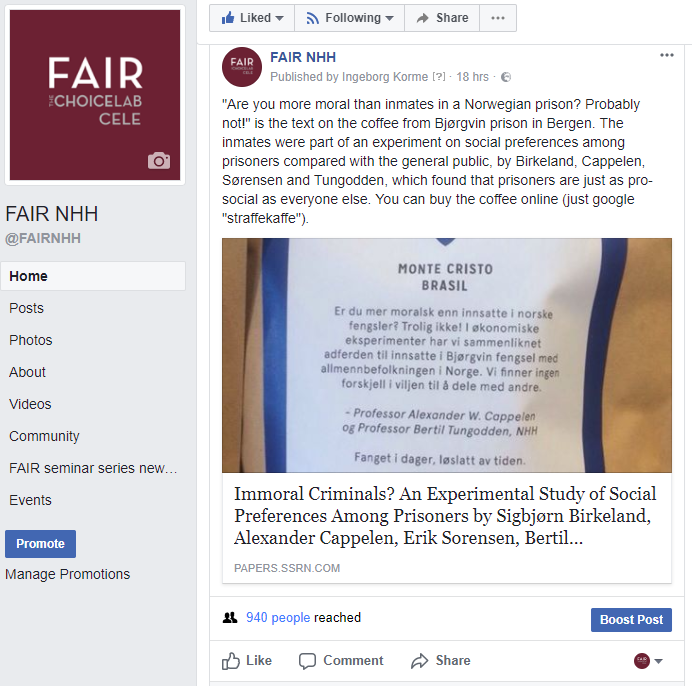If your friends like it, you'll like it
Johan Egebark and Mathias Ekström test in their new paper "Liking what others 'Like': using Facebook to identify determinants of conformity" whether users are more prone to support content if someone else has "Liked" it before.
Egebark and Ekström set up a natural field experiment to test whether users are more prone to support content if someone else has done so before, using the social networking service Facebook. They compared the influence of friends, using an objective measure of mutual friendship, to the influence of random strangers.
We follow others
The observation that people often follow others’ behavior—whether it is about what car to buy, which candidate to vote for in public elections or how much tip to give in a restaurant—has captivated social scientists for centuries. Egebark and Ekström wished to find out to what extent conformity depends on group size and social ties. There were three different treatment conditions: (1) one stranger has Liked the content, (2) three strangers have Liked the content, and (3) one friend has Liked the content.
Their results show that observing one Like from a single stranger had no impact on the number of subsequent Likes. However, increasing the size of the influencing group to three strangers doubled the probability that a subject Liked the update. Friendship was also decisive: people were four times more likely to press the Like button if a friend, rather than a stranger, did so before them. The results are robust to different specifications and apply to both men and women. Moreover, the treatment effects are both content and sender independent, which suggests they apply more broadly.
The existence of threshold effects in the experiment clearly shows that both group size and social proximity matters when opinions are shaped.

We trust our friends the most
But why? Why is group size and social ties crucial? One line of research assumes that individuals imitate those who are believed to be better informed about quality to promote their own, monetary, self-interest—so-called rational herding (Bikhchandani et al. 1992, 1998). Another strand recognizes that people are motivated by “social” factors, such as the desire for prestige, esteem, popularity, or acceptance, and that these social factors also can produce conformity (Akerlof 1980; Jones 1984; Bernheim 1994). The model by Banerjee (1992) outlines why both larger groups, and trusted individuals (friends in our case), can provide more accurate information about the appropriate behavior in a given situation. Second, with respect to social status, there is a psychological literature suggesting that larger groups, and in-group members (friends in our case), can put more pressure on individuals (Asch 1952; Tajfel 1981).
From one to many
Egebark and Ekström show that single individuals are indeed influential, but only among friends within a network. This implies that contagion can take off from a single node and evolve endogenously from peer to peer. We also demonstrate that once a sufficient number of peers have adopted the behavior, they will affect people outside the network. Hence, size and source may serve as complements in the proliferation of behavior—source increases penetration whereas size generates dispersion.
